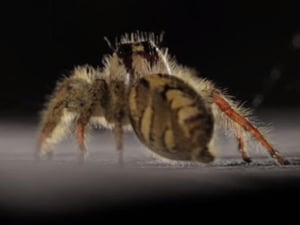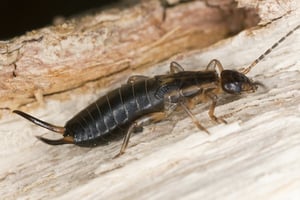Are Massachusetts basement bugs truly as insidious as our wild imaginations have convinced us?
Basements have a tendency to freak people out, due in no small part to the kinds of creepy-crawlies that have an affinity for the dark and damp. If you’re anything like me, you spent your childhood running full speed up the steps to avoid being stuck with whatever might be lurking down there (confession: I may or may not still do that). Some of the critters that like to live in our basements tend to be less than adorable, but do we really need to worry?
The short answer is no. They are likely not dangerous and pose little threat to your property. That being said, they are not a very pleasant sight to see and can eventually damage some of your belongings. Here’s a brief run-down of common offenders, and whether you need to be concerned.
Spiders
 We’ve all been victim to a stray spider web, and we’ve all done the familiar “get it off me” dance after walking through one. Now, nobody enjoys being surprised like that, but in Massachusetts it’s highly unlikely that you’ve encountered a poisonous spider. Some may bite in self-defense, but overall our spiders are harmless and actually beneficial. The presence of spiders can be an indicator of other indoor pests that provide a food source, some of which you may never have noticed.
We’ve all been victim to a stray spider web, and we’ve all done the familiar “get it off me” dance after walking through one. Now, nobody enjoys being surprised like that, but in Massachusetts it’s highly unlikely that you’ve encountered a poisonous spider. Some may bite in self-defense, but overall our spiders are harmless and actually beneficial. The presence of spiders can be an indicator of other indoor pests that provide a food source, some of which you may never have noticed.
Even with this knowledge, if a spider problem is getting out of control, a pest management professional can help.
Silverfish
Perhaps one of the most intimidating visitors you can find in your basement is the silverfish. With their silver scales, long tail “bristles” and long antennae, they tend to look larger than their ½ inch bodies. Because they lack wings, they scurry in a wriggling motion similar to that of a fish, hence the name. The silverfish appears far more threatening than its true nature; they cannot bite or sting, nor can they damage the structure of your home.
TL;DR (too long; didn’t read)? Silverfish do not pose a threat to humans, but they can chew through clothing, upholstery, paper, and packaging, among other items, so it’s probably best to contact a professional to rid them from your basement.
Centipedes
More specifically the aptly-named house centipede, enjoy the environment provided by a basement or crawlspace. Long yellow-brown bodies and fifteen pairs of legs make the centipedes appear much larger than they are, similar to the silverfish. Because they prefer to hunt for food at night, it’s not common to encounter them. Centipedes are capable of “stinging” when threatened, but these incidents are rare.
Like spiders, centipedes can be a beneficial insect, helping to reduce populations of other insects, but if they’ve decided they like your home a bit too much, there are treatment options.
Earwigs
 Most of us recognize an earwig right off the bat by their pincers. Like many basement pests, they prefer dark, damp places and primarily come out at night. While their pincers (scientifically known as cerci) give them a tough appearance, earwigs cannot sting, bite, transmit diseases or damage structures. They can pinch if handled, but then the question becomes: why are you handling them?
Most of us recognize an earwig right off the bat by their pincers. Like many basement pests, they prefer dark, damp places and primarily come out at night. While their pincers (scientifically known as cerci) give them a tough appearance, earwigs cannot sting, bite, transmit diseases or damage structures. They can pinch if handled, but then the question becomes: why are you handling them?
In closing, many pests that fall under the umbrella of “basement bug” are largely harmless to people and homes, and may even be helpful guests. But when the populations reach certain thresholds or start to interfere with your life, you’re under no obligation to continue sharing your space. Call or email Burgess Pest today for a free consultation—our programs can take care of what’s “wigging” you out.


